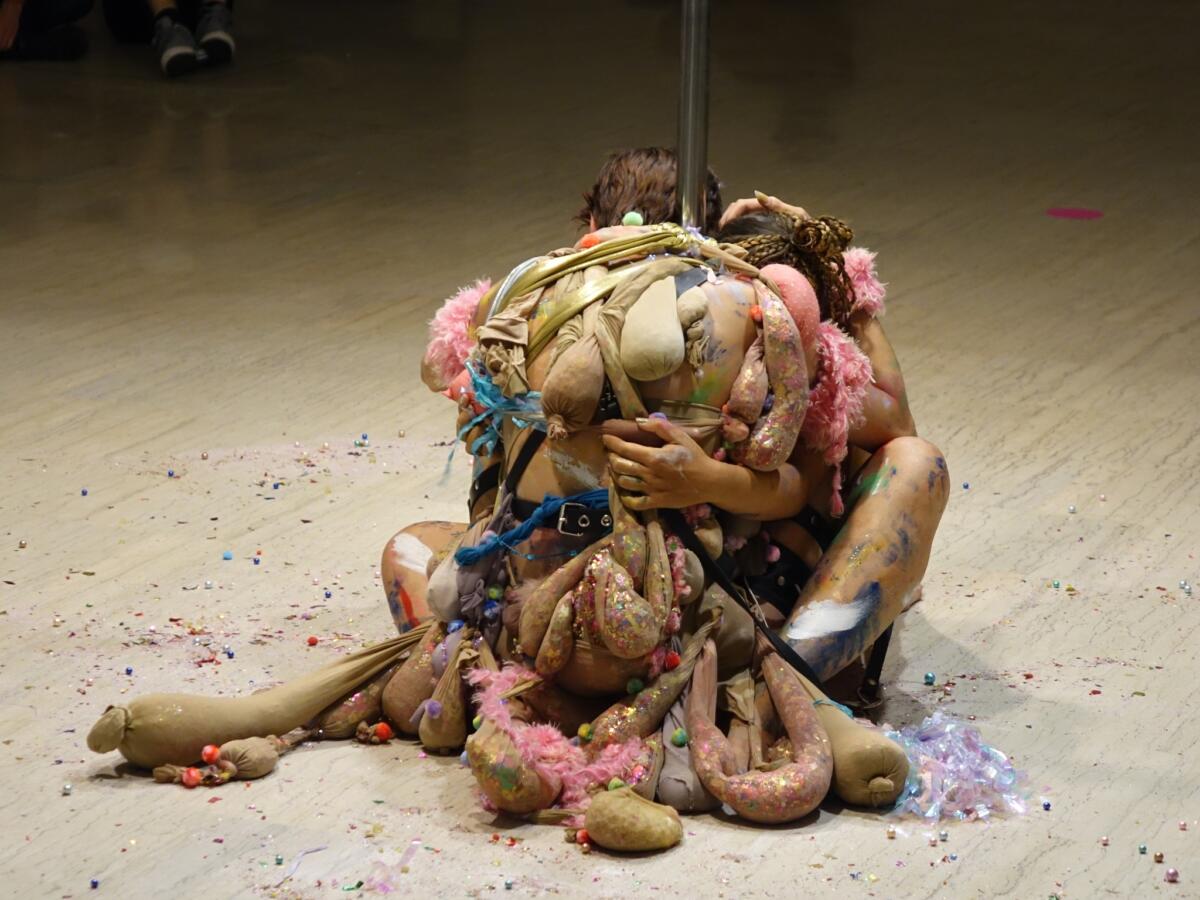
I first heard about Cirkulacija 2 from Sanja Simić, who I was staying with in Ljubljana. I went to this collectively run cultural space for a performance by Swedish-born artist Vida Vojić, who has been returning to Slovenia every year for the past five years. Cirkulacija 2 is located right in the city centre, in the underground, which is also a “self-organized” safe space for Ljubljana’s homeless community. From the outside Cirkulacija 2 looks like a shop, with large glass walls and double doors covered by thick black curtains. Inside, there is a large exhibition and event space, with a community room and workshops behind it. Before the performance starts, everyone is chatting in the social rooms, someone has brought a cake, someone else a wine. Even though I’m not from Ljubljana and only know two people, I feel welcomed here.
After Vida’s performance, an intimate sound piece consisting of spoken word poetry, an Elvis Presley song, a traditional Swedish melody and a ritualistic opening and closing, I ask a man who looks like one of the organisers if we could talk about Cirkulacija 2. The man directs me to a tall young woman named Tatiana and introduces her as the president of the venue.
A few days later we all get together for the interview: Borut, Tatiana and me. Borut is a man in his sixties, wearing a black T-shirt and glasses, he drinks a Radler beer. Tatiana is much younger, has a stylish haircut, wears a coloured shirt and black shorts. She smokes. I order a cold coke. We meet in a local café, in a park, away from the tourists’ gaze. It is a very hot day and we are all grumbling about it. I feel like dissolving in the heat, but try hard to stay focused.
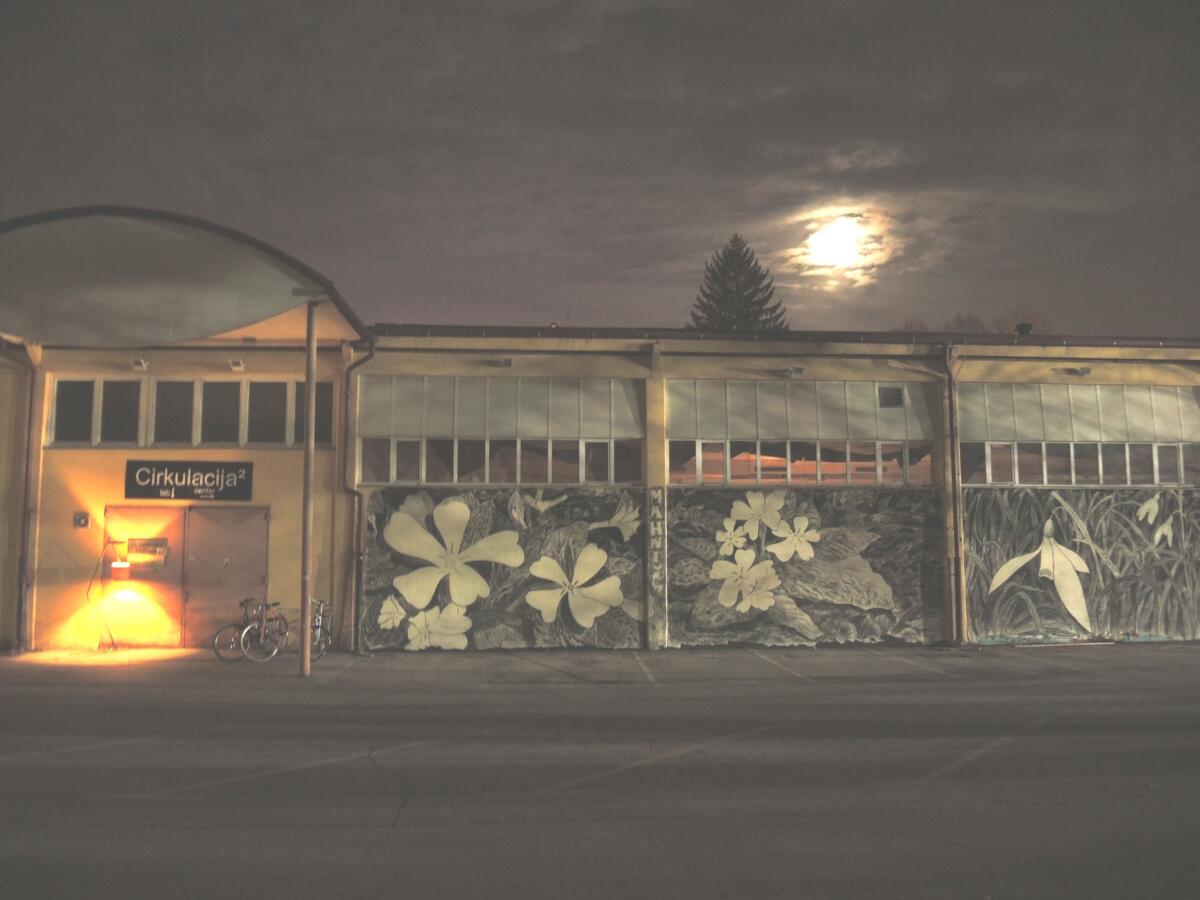

Zofia nierodzińska: Would you like to introduce yourself and Circulacija 2?
Borut Savski: Cirkulajcija 2 is a collective, and it’s a space we share. We started in 2007 in the nearby squat, it was our first common space, in the old bicycle factory, hence the name: Cirkulacija 2 – as the former heat exchange room. From the very beginning we thought of it as a combined production and presentation space. While working together as a collective we created a lot of so-called “platforms” which were events, performances or concerts – like happenings. The “platforms” are not necessarily connected to our space. We travel with them to festivals and galleries and prepare a separate temporary situation there. For these occasions we invite artists who are somehow connected to C2 or should be connected – and on such occasions we present ourselves as Expanded Cirkulacija. So this processual and temporal community of artists is our approach, and it has been going on for more than 15 years now.
In between, in 2013, we left the squat and moved to a space in a former tobacco factory that had a private owner. In the squat we did not have to pay rent but we needed to produce our own electricity. In the tobacco factory we had to pay rent like any other tenant. It was only a small amount for a very large space, but after five years there, in 2019, the owner changed and they wanted to empty the whole area – to get rid of about 50 small businesses / renters – including a couple of art or cultural spaces. We were presented with a very large increase in our rent – which was a clear signal that they wanted us out. We asked the department of culture of the city for possible help, and they gave us a positive answer – in four months we relocated to the underground location, which is where we are now. We successfully received the status of an organization that works in the public interest. This allows us to pay only the running costs, so it is an extremely good situation. The place where we are now is in the centre, four metres below the main street. After we received this space – in spite of the COVID pandemic, we intensified our activities. Cirkulacija 2 is a relatively undefined space, so we work with most of the people who know our aesthetics – and with those who approach us. Compatibility means that the people with whom we share the space have to fit in – aesthetically or ethically – with what we do. This usually means a collective or explorative interdisciplinary approach with a bit of experiment – from their part. There are many artists or artistic groups or even organizations in Ljubljana without their own performative space.
Ljubljana is a very gentrified city, the prices for renting apartments are even higher than in Berlin, so do you think that art spaces, even collective ones, do not contribute to this process?
Borut: The process of gentrification is stronger and runs in a totally different reality than the reality of artists. The notion that artists with their symbolic “cleaning” of the spaces raise the prices in parts of the city, and therefore they are an immanent part of the gentrification process doesn’t give the whole picture. Artists simply want to use cheap spaces. They are not in the money business – they produce art – which has a highly symbolic value. When the prices rise – they are thrown out. This brings out the reality of the temporality of such spaces. Today it is really difficult to find a space to produce and present art here, and sustain it for longer. There are a lot of artists who are struggling to find appropriate spaces. In my view, Cirkulacija 2 is something like a buffer – in between the shortage of art spaces and the artists without spaces: Because we got the space from the municipality, we have to be very open for all others. I mean, considering our aesthetic. I would say we are very friendly in that sense. So, we are a buffer between state and city institutions – and still necessarily operate as an artist-run space. The process of getting into Cirkulacija 2 is not difficult. Artists just have to come or call and present what they want to do, and if they are to some extent in line with our directions – we give them the opportunity to present their stuff. And, what is important, there has to be some kind of personal interest, at least from one of the so-called “inner producers” of Cirkulacija 2, Tatiana is an inner producer, she can organize whatever she wants. I’m also one of the inner producers; we do things pretty independently. We are not a monolith where everybody has to agree. We can work relatively autonomously. But that is only my idea of how to run things.

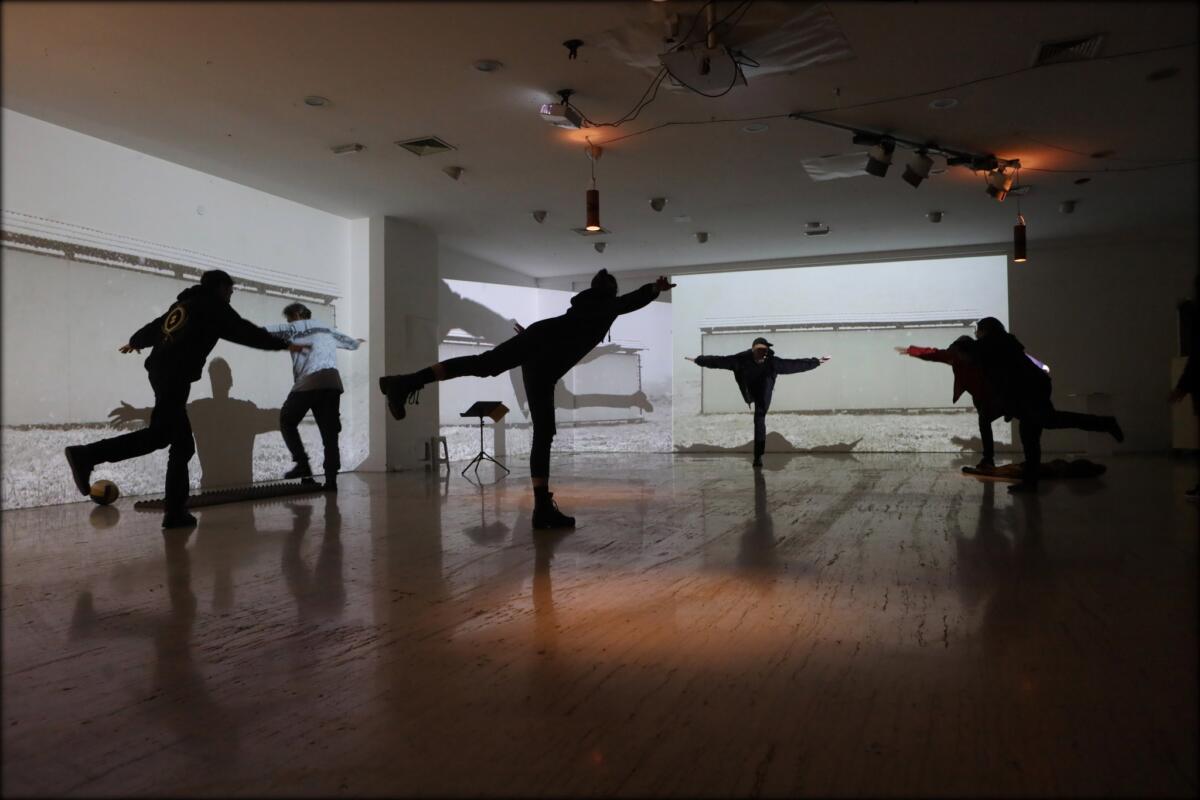
…you used a term: “inner producer”, do you think it describes your work better than “curator” or “programme director”? Does the term represent the way you work?
Tatiana Kocmur: Yes, I mean we try not to be hierarchical, but of course in a collective there have to be some rules. We are like 10 artists working together, but at the moment only three or four are taking care of the programme and the organisation. We are a fluid organisation. If one of the producers says “I’m interested in inviting this artist”, then s_he starts talking to the other members about what and how we can do and help, and then we divide the tasks between us. So from project to project it can be quite different who does what. It’s important that one person from the collective doesn’t take on all the tasks, but tries to distribute them in a healthy way, let’s say. Because, of course, we get very little money to produce what we do. It is just a subsidy from the city.
How did Cirkulacija 2 start on a personal level? Did the collective come first or did the space bring you together?
Borut: On a personal level, there were two artists in 2005-06, Stefan Doepner, who is a German-born artist but moved to Ljubljana quite a long time ago, and myself. So Stefan had a very clear vision of a space that would be shared, and I had a very clear vision of the people and activities that I wanted to bring in. The key was the long term sustainability of our art direction – which is multimedia, interactive, generative, machine art – robots and computers and sound art as a kind of glue. Step by step we developed a kind of system that came to life. And, as I said, the path to the artwork or the performance or any other public event always includes the production part – the work involved to build up a machine, or special speakers, the generative video system, etc. The artists who work with us are usually aware of that. A lot of artists from the West who come to our place are already somehow atomised – as a kind of little exchange product in the field of the arts. Here, when they enter our collective situation, they are connected to a person who helps them around, or even participates – but this person is not a professional producer, but an artist. These relations have to remain on a kind of friendly level and personal interest. In a sense, we act as amateurs, because that friendly basis should always be in the foreground, not professionalism. Friendship is more demanding than professionalism and provides more. We are not a museum or a private gallery – and we have been in opposition to the two from the very beginning.
It’s quite extraordinary that you have people from different generations in the collective. How do you manage to work together for 15 years and attract younger artists?
Borut: This is a direct consequence of being open to other artists. They bring in their own public. In time the different public starts to mix. Not always – but occasionally. Very slowly artists from different generations start to collaborate with each other, in the form of encounters or modules as we call them, This is again linked with the term platform or happening which is a kind of open form where we can prepare a choreography / dramaturgy = the ingredients a little bit in advance together – but there is quite some amount of individual independence. I think we manage to have a lot of fun doing it. We are always open to new collaborations. And we have a space in a perfect location.
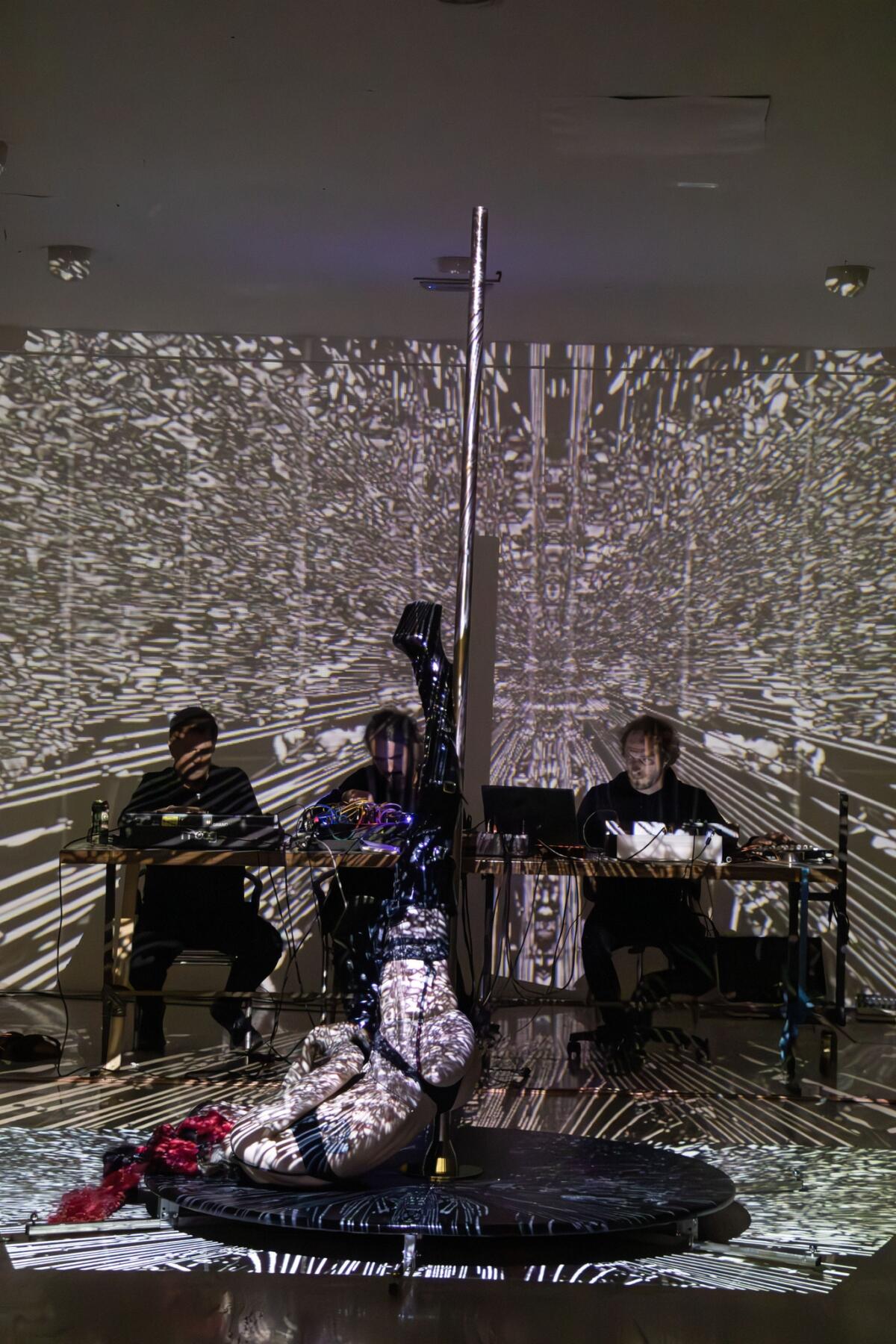
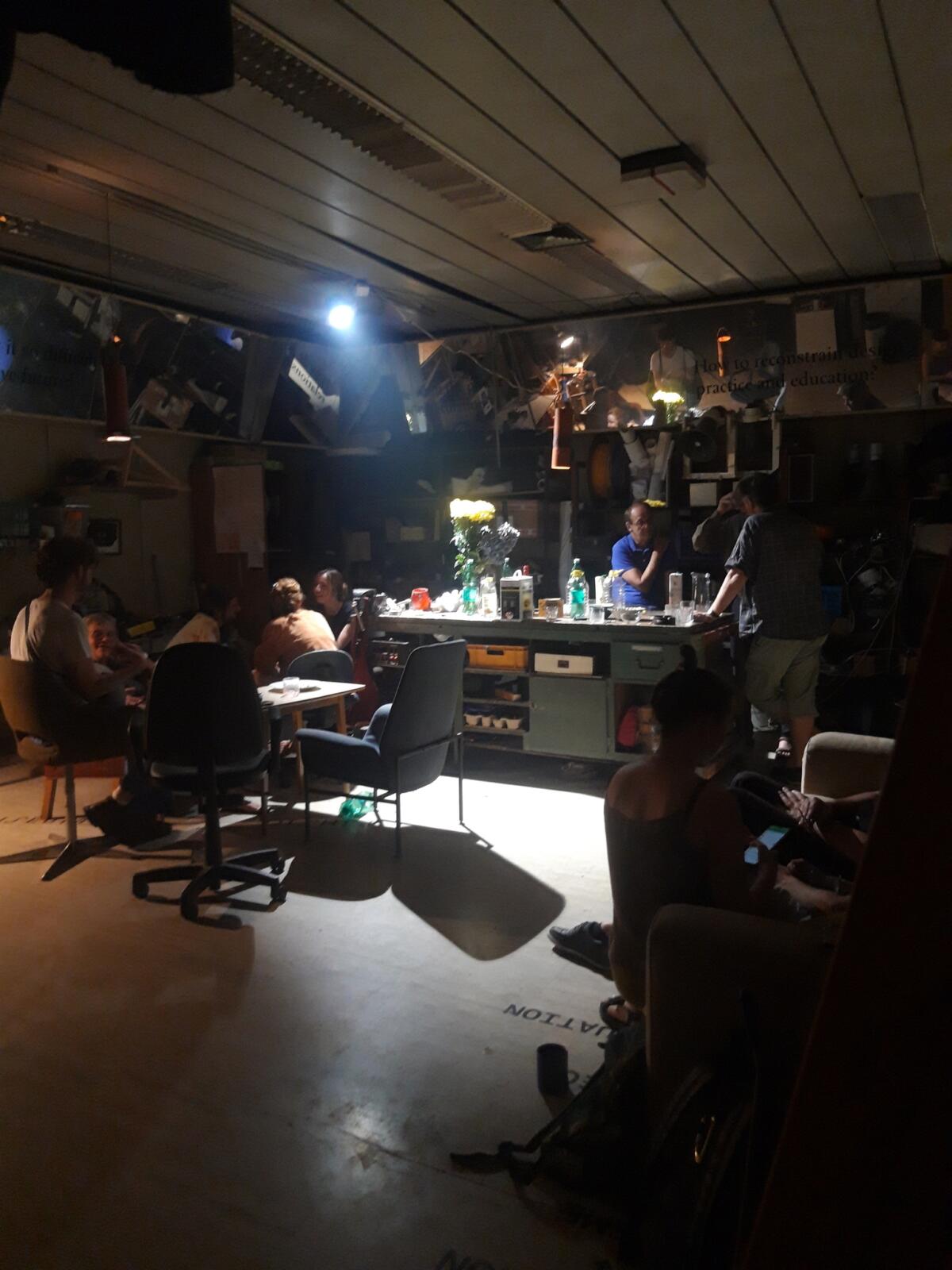
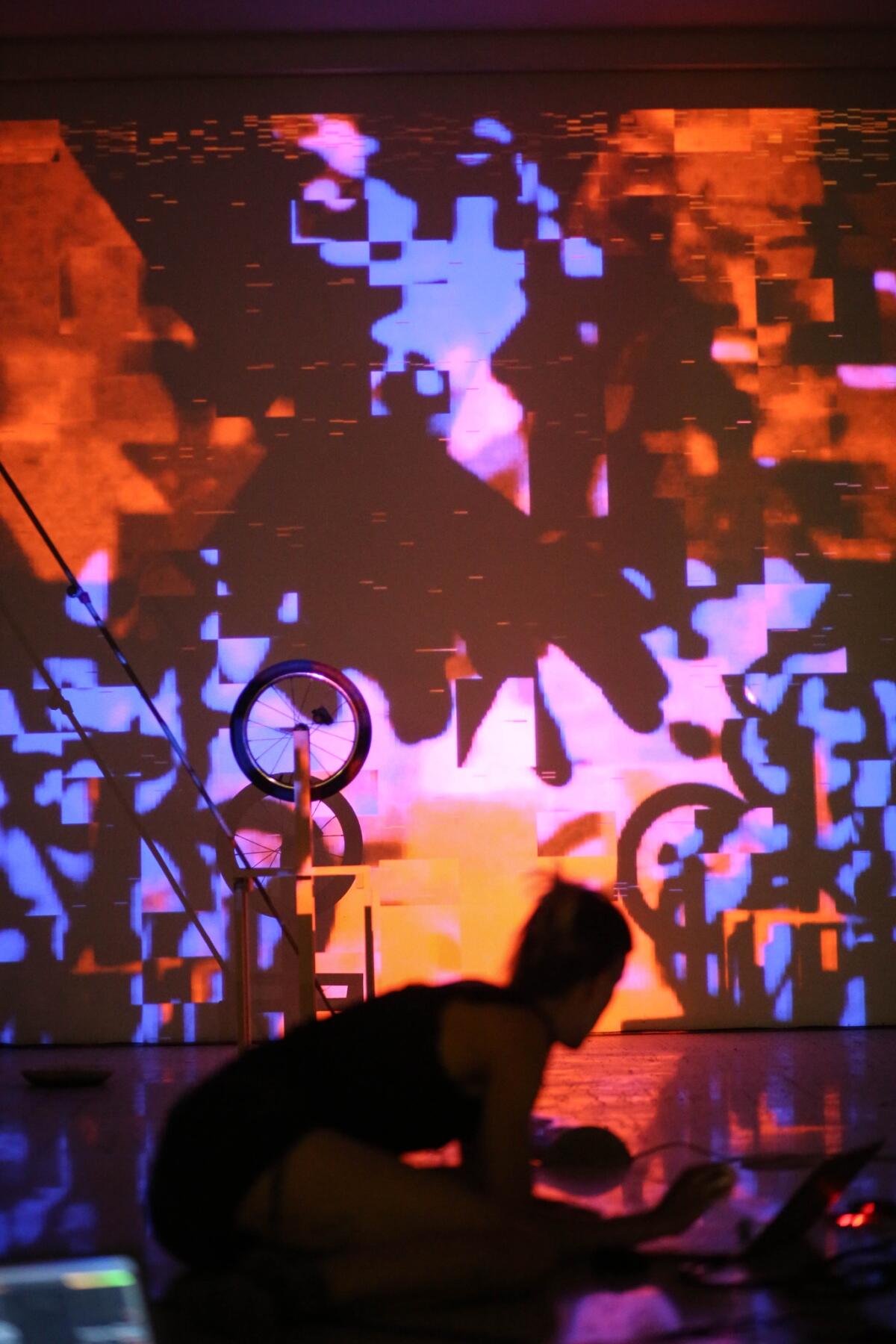
You also do workshops, as I saw on your website. Do you also have an educational programme?
Borut: Not anymore.
Tatiana: Not so much.
Borut: From 2009-13, we tried to do something, but very soon we saw that the institutions had kind of jumped in. Probably because they had envisioned some extra money to get and to spend on this kind of educational activity. For me personally, these kinds of educational projects became rather boring.
May I ask how artists can start to collaborate with you?
Tatiana: All they have to do is send us an e-mail or just come to one of the performances and see if they like the space and then talk to the people who are there on the spot.
Is it common for people you don’t know to contact you?
Borut/Tatiana: Yes.
So you do not stick to your own circle of friends?
Tatiana: No, no, this is like expanding the friendship area. I think the reason for the diversity of generations in Cirkulacija 2 is this friendly openness. I especially look after my generation, the young people who come, and I try to attract others. I am quite convinced that the groups are social amplifiers and in a small group the positive energy can really flourish and produce a lot. It’s easier to be in a group.
Borut: Yes, it is easier in a group but I wouldn’t put too much faith in that beloved word collectivism. It’s rather more like preparing a soup, you put a lot of different things in it and something comes out, and mostly smells good. With this recipe, I now jump back to the nineties. Until then much of the positive counterculture ideologies were carried by music. In the nineties – not anymore. It was then that internet technology exploded – but still as a very positive process. After the fall of the Berlin Wall, people from the West looked to the East to find out what the interesting people on the other side were doing, and the same thing happened here, so for a few years there was a very good energy and it was quite natural to start these collaborations with Austria or Germany through testing, talking via the internet, meeting at some conferences and so on. As for me, before Cirkulacija 2, I was heavily involved in Radio Študent, which is said to be the oldest independent radio station in Europe (since 1969). In the mid nineties, in the framework of Radio Student, with Marko Košnik, we organized a new media initiative called “Ministry of Experiment” – to explore and experiment with the possibilities of the internet. We were experimenting with web pages, with streaming, and basically discovering media art for our purposes. And then the initiative fell apart in 2000 because of personal disagreements, which happens quite often in collective situations.
It took me about six years before I again entered the domain of returning to large group dynamics. Within an organization called Trivia Art in 2006 we organized an exchange of about 20 people between two cities – Ljubljana and Graz. They have a festival called Steirischer Herbst, and we took part in it. A month or two later we were inviting artists from Graz to Kapelica Gallery in Ljubljana. And after this experience the three participants in this exchange (Stefan, Borut, and Boštjan Leskovšek) decided that we needed a space for long-term collaborations.. We asked around the squat Rog and got a positive answer. The place was already run by an anarchist group, it was a social centre, and soon two other artists joined us (Majda Gregorič and Ksenija Čerče).
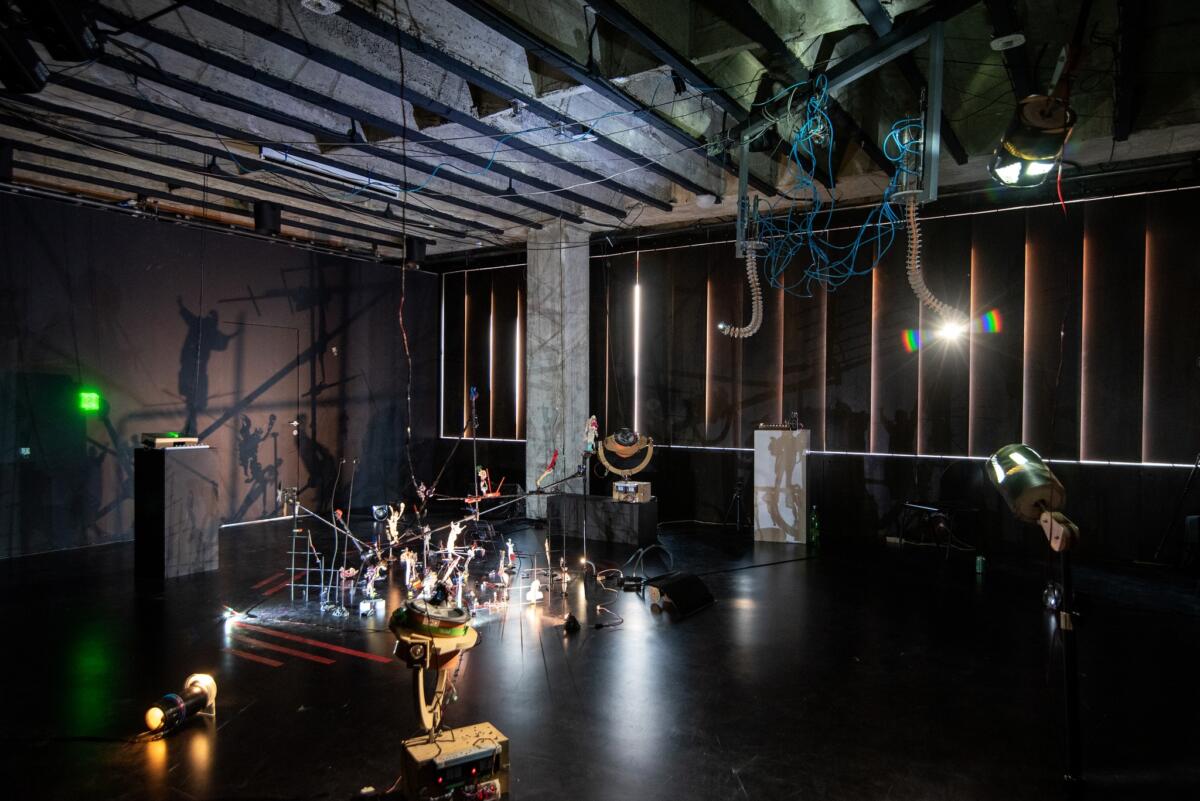
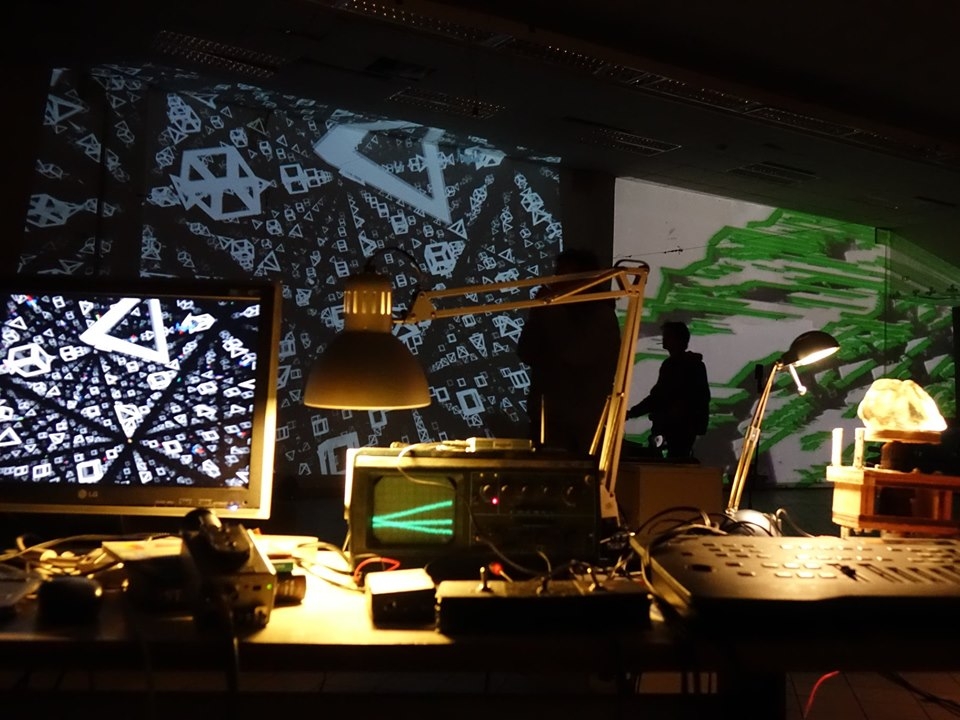
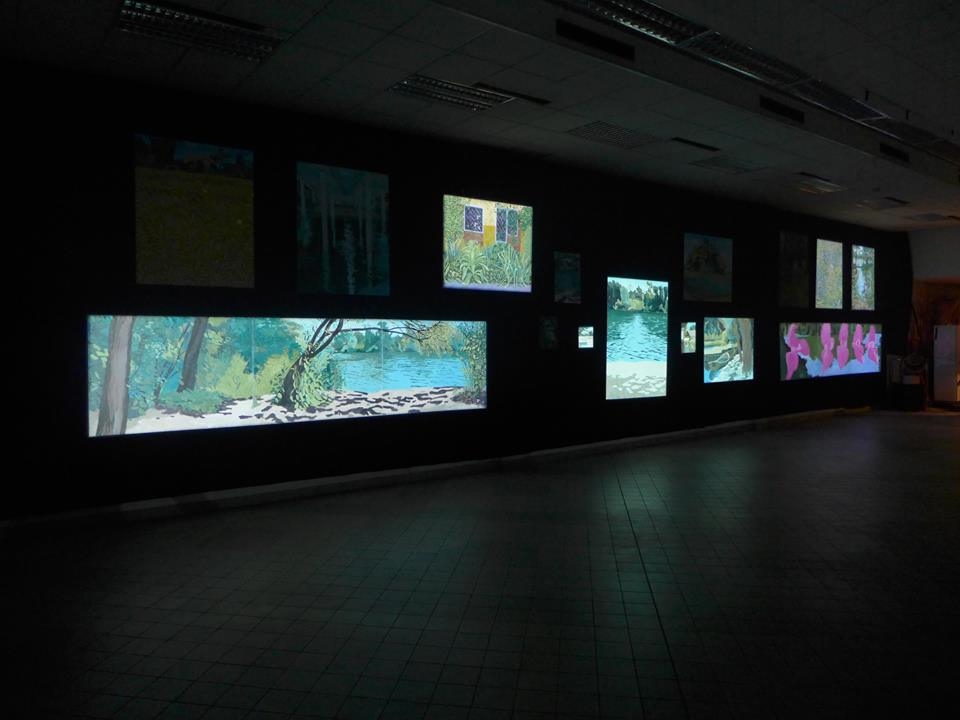
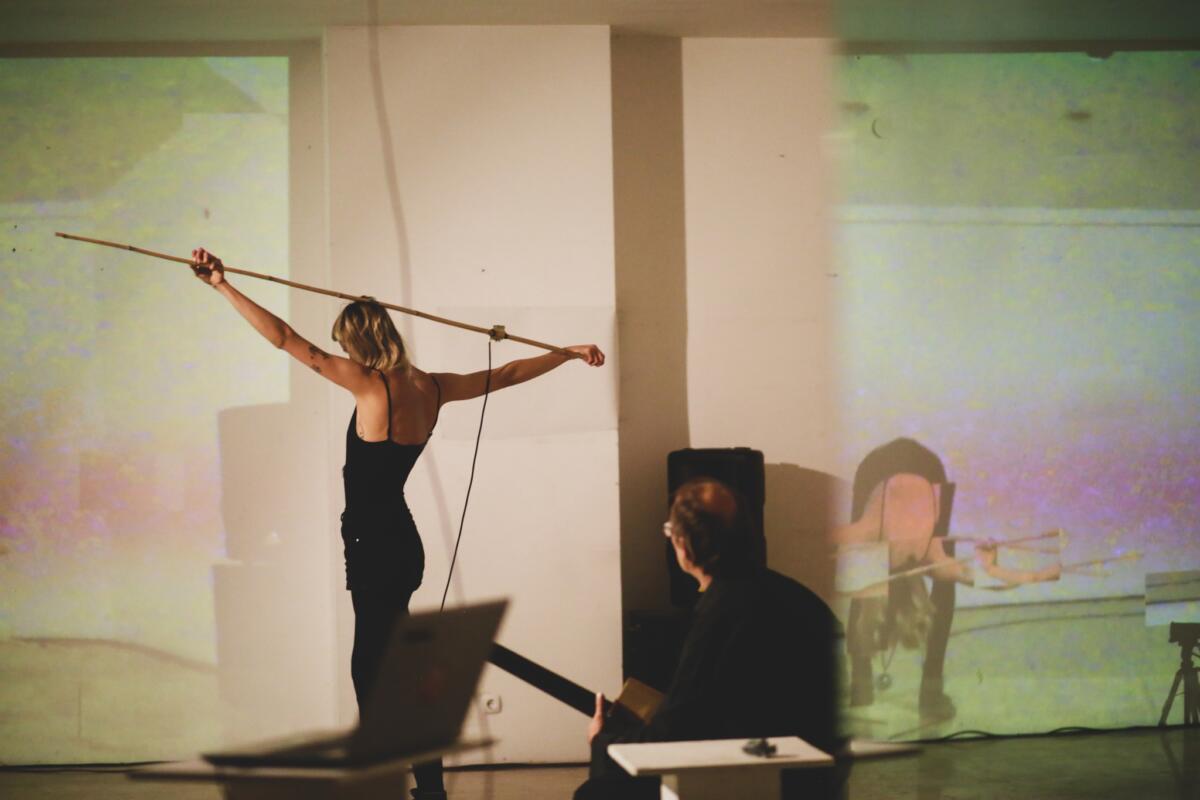
And at some point, Tatiana joined the collective as well, right?
Tatiana: Yes,I joined them when they moved to the city center 3 years ago. I had my studio in Rog – the bicycle factory, where Cirkulacija was born. I studied painting at the academy, but very soon I started working in the field of performance art. I’m very interested in life events that involve the bodies of artists and the audience, so I’m interested in the situations, the meeting of the bodies, the different stories they bring, the atmosphere they create together. I work a lot with artists from different fields. I enjoy that and I enjoy what can happen in this fusion of different aesthetics and ways of thinking. It can be really rich. I learn a lot in the process and collaborations tend to become very good friendships after a while.
Is that why it was easy for you to start working with Cirkulacija 2? Does this collective, production-based commitment fit in with your individual work as an artist?
Tatiana: Yes, probably, I started going to events at Cirkulacija 2 more when they moved to the tobacco factory. We met there and exchanged some ideas and then I performed a few times before I joined the group. And then Cirkulacija 2 moved to this place in the centre. And it was kind of a need to expand a little bit or refresh the group, and then Borut asked me… or I don’t know exactly how it happened, but then I started to be part of the group and the programme. So yeah, it was really like very, how to say, the process of getting into the group was very organic.
Could you recall a particular performance, situation or encounter at Cirkulacija that has stuck in your mind that you would like to share?
Borut: In 2020 we prepared and started performing with a concept called “Weltverbesserungsmaschine” – it is an old enlightenment concept of European monarchs – to view the state as a well oiled machine – a proto idea of a modern state. It brought to us citizens many qualities – but it was never a linear process: authoritarian break-ups happened often (e.g.: the 20th century). During the COVID pandemic the fear that the “machine” was again moving away from democracy was evident. Using the iconography of recent digressions we made a more positive view of this machine – a living form, a situation where we put together our different approaches, a performative installation, let’s say, with video, robots, performance and our movements, voices and sounds. So it was like putting us together as a group into a certain form or shape that was then presented as a performance and even installation in a gallery space. So that was something I found very interesting. Again the participants in the machine were also varying from one year and place to another.
Tatiana: I like this living form as well. I had the chance to be part of the last World Improvement Machine. Next month we will present a similar situation at the festiva IZIS in Koper. I am very excited because it will be the first presentation by the new crew.
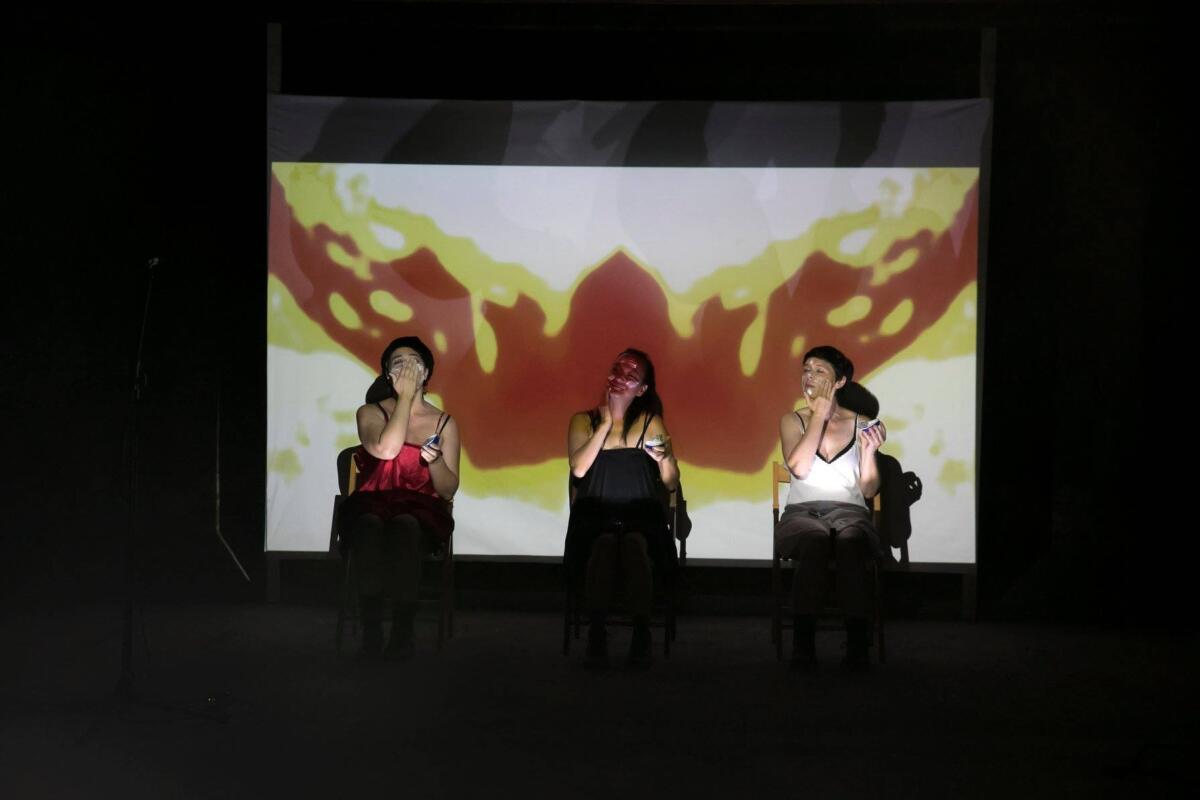
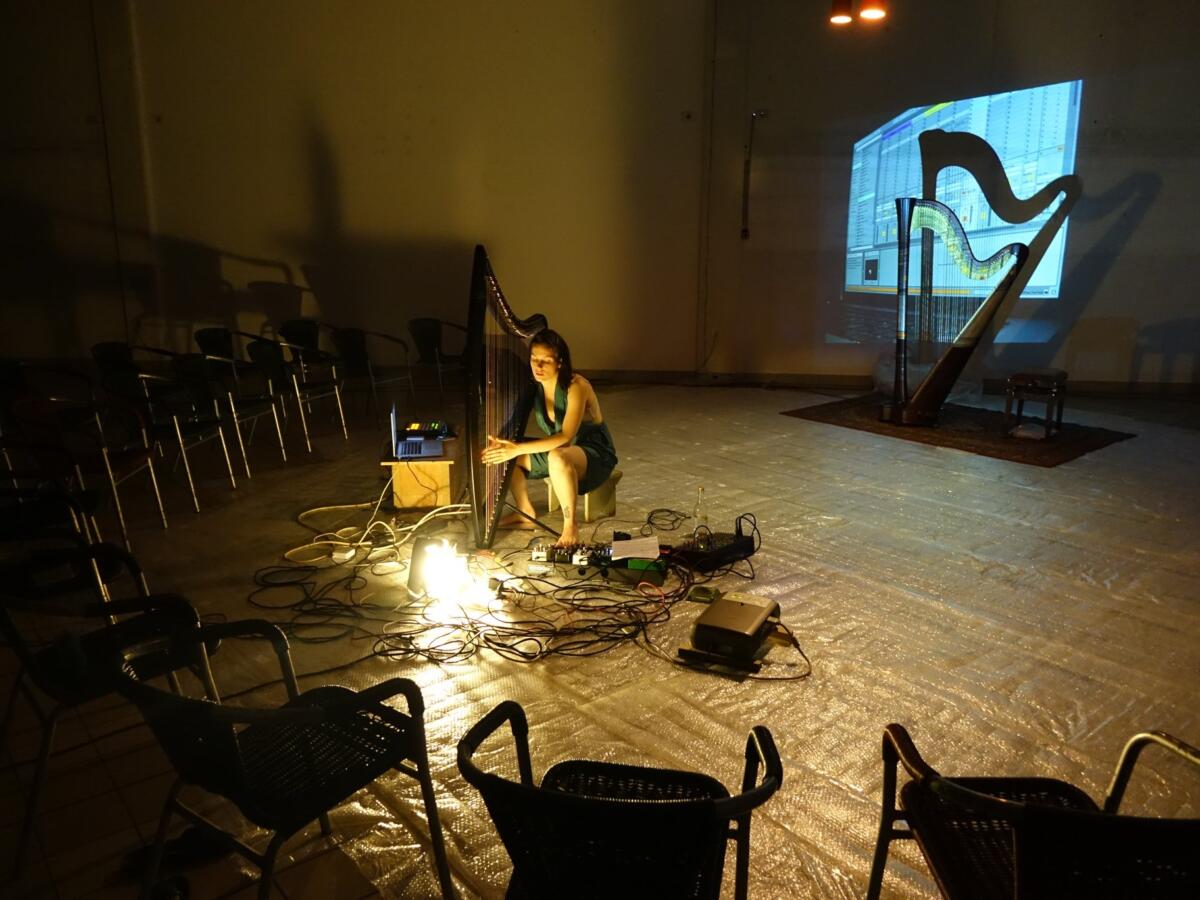

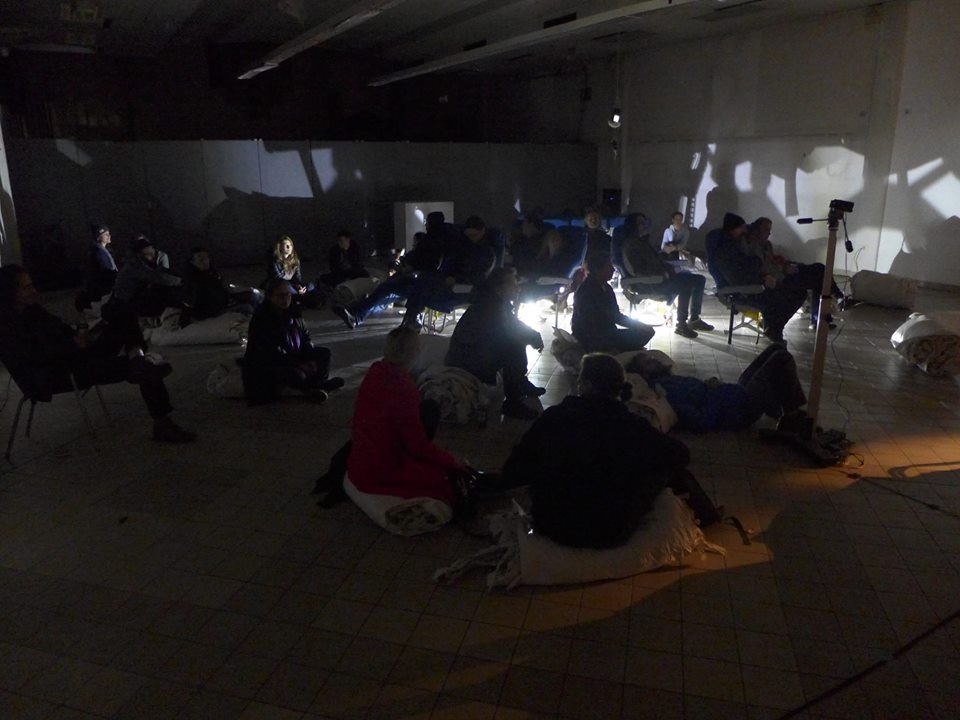
What does the future hold for Cirkulacija 2? You mentioned that you are in a period of transition. What does that mean?
Tatiana: For me it is very important to keep Cirkulacija 2 alive because it is special. There are not many collectively run spaces like this in Ljubljana. Above all, it is not only a space for presenting art, but also a workshop. Behind the gallery space we have a 3D and a woodcut workshop. Artists, but not only artists, can produce their works here. We have machines and tools and we can use them the way we feel, not in this institutionalized way.
Borut: So yeah, the future, I mean, we are in a period of transition right now. It seems that the original trio after 15 years reached the end of their C2 era. Until now we didn’t need to talk about basic things. It was experienced on our skin in our different pasts: In this way we were compatible – and not blocking / even supporting each other. The responsibility for the common “space” (space, tools, art pieces, projects, hygiene of space, getting & spending money, communicating with public officials, collaborations, new members & participants) was there to some extent for the most of the 15 years. But for the last five years I felt that it was too much on me. Disagreements started – even on the level of basic concepts. A voting machine was proposed (“democracy”). Now we have it. Five new members joined in recently – mostly artists who had some previous experiences within Cirkulacija 2 projects (video artist Simon Svetlik, sound artist Marko Batista, theatre director Vlado Repnik, street and conceptual artist name:, and Sanja Simić). For the new members, Cirkulacija 2 activities always seem a bit chaotic and undefined, since it relies on a person to fully understand and even feel the need for such a collective space and social group – and see the advantages, unique opportunities and even wider responsibilities to the local community – just for having such a space. They should observe it as an open space for their interests, ideas and activities – and others should not block it via a voting machine. When the personal interests and fun are gone, one should reconsider their position.
Tatiana: Yes, it’s not that we just want to produce stuff like in other institutions, but we want people to do site-specific pieces with the materials and with the idea of Cirkulacija 2, so to merge into this machine of production, to be in contact with the space, not just to come and bring finished stuff, make an exhibition and then leave… it’s basically this constant social situation.
Borut: But in terms of what you were saying about gentrification, I think this is one of the few independent art places left in the city. Most of the city area is privatized and investors / developers have already taken all the city center. So, for the moment, Cirkulacija 2 is one of those rare non-commercial spaces. So yes, I think it is good to keep it going. To show our presence, that we need space as citizens and artists. And here I have references to Hakim Bey, an anarchist writer, who developed the concept of Temporary Autonomous Zones; the short-lived spaces which elude formal structures of control. With cultural spaces it’s similar, they are always a temporary situation, but for some particular time they work, then they die out. Maybe it’s not time for us to die out just yet.
Edited by Katie Zazenski
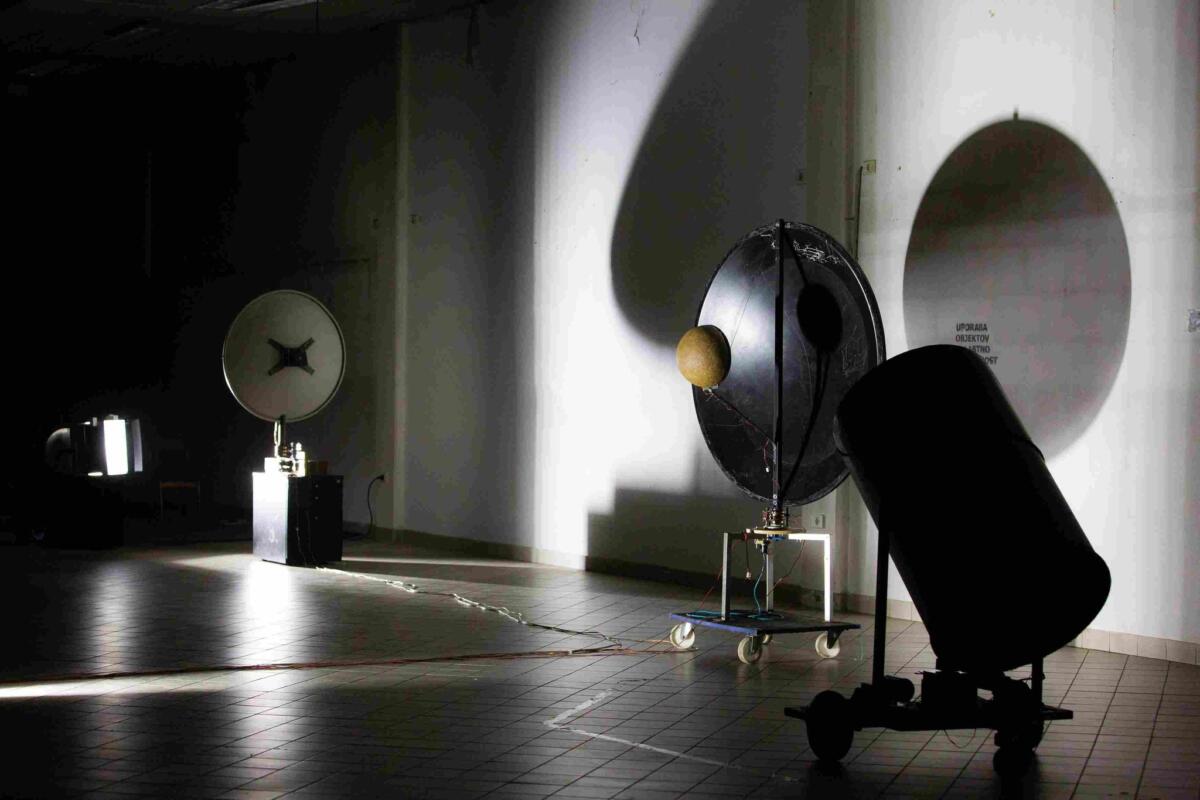





Zofia nierodzinska’s research stay in Ljubljana and the interview were made possible thanks to a grant from Culture Moves Europe.
Imprint
| Place / venue | Cirkulacija 2 |
| Index | Borut Savski Cirkulacija 2 Ljubljana Slovenia Tatiana Kocmur Zofia Nierodzińska |
